
How many lines of symmetry does the parallelogram have?
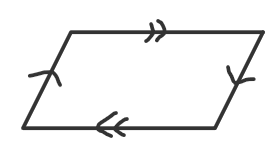

Answer
588k+ views
Hint: Find the line that will divide the shape in two equal and symmetric parts. Such that two parts are a mirror image of each other.
Complete step-by-step solution -
In the question, we have to find the lines of symmetry of the parallelogram
Now, it is known that the line of symmetry will divide any shape in two equal parts in such a way that if we fold the figure above this line of symmetry then the two parts will overlap.
Now, when we draw a line EF as shown below, we will not get a symmetric part, as the two parts are not the mirror image.
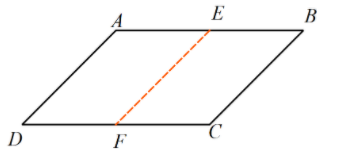
Hence, the line EF is not dividing the parallelogram in two equal and overlapping parts. Hence, EF is not a line of symmetry.
Now, when we draw a line GH as shown below,
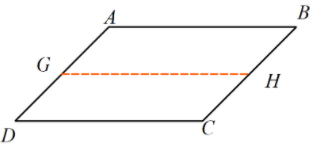
Here, GH is again not a line of symmetry as the two parts are not overlapping. So GH is not a line of symmetry.
Now, when we draw a line AC as shown below,
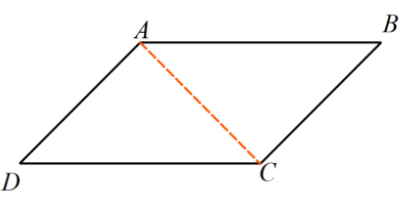
Then, AC again will not be a line of symmetry, as the two parts are not overlapping. So AC is not a line of symmetry.
Similarly, when we draw a line BD as shown below,
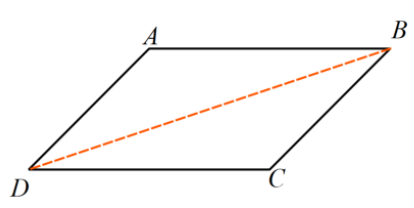
Then, BD again will not be a line of symmetry, as the two parts are not overlapping. So BD is not a line of symmetry.
Hence, there will be zero line of symmetry of a parallelogram.
Note: There is a difference between line symmetry and the rotational symmetry. The parallelogram will have the rotational symmetry of order two. Where the degree of rotation is 180 degrees. However, the rhombus will have two lines of symmetry which are along the diagonals.
Complete step-by-step solution -
In the question, we have to find the lines of symmetry of the parallelogram
Now, it is known that the line of symmetry will divide any shape in two equal parts in such a way that if we fold the figure above this line of symmetry then the two parts will overlap.
Now, when we draw a line EF as shown below, we will not get a symmetric part, as the two parts are not the mirror image.

Hence, the line EF is not dividing the parallelogram in two equal and overlapping parts. Hence, EF is not a line of symmetry.
Now, when we draw a line GH as shown below,

Here, GH is again not a line of symmetry as the two parts are not overlapping. So GH is not a line of symmetry.
Now, when we draw a line AC as shown below,

Then, AC again will not be a line of symmetry, as the two parts are not overlapping. So AC is not a line of symmetry.
Similarly, when we draw a line BD as shown below,

Then, BD again will not be a line of symmetry, as the two parts are not overlapping. So BD is not a line of symmetry.
Hence, there will be zero line of symmetry of a parallelogram.
Note: There is a difference between line symmetry and the rotational symmetry. The parallelogram will have the rotational symmetry of order two. Where the degree of rotation is 180 degrees. However, the rhombus will have two lines of symmetry which are along the diagonals.
Recently Updated Pages
Master Class 6 English: Engaging Questions & Answers for Success

Master Class 6 Social Science: Engaging Questions & Answers for Success

Master Class 6 Maths: Engaging Questions & Answers for Success

Master Class 6 Science: Engaging Questions & Answers for Success

Class 6 Question and Answer - Your Ultimate Solutions Guide

Why are manures considered better than fertilizers class 11 biology CBSE

Trending doubts
Give 10 examples for herbs , shrubs , climbers , creepers

What is the capital city of Australia? A) Sydney B) Melbourne C) Brisbane D) Canberra

Four bells toll together at 900am They toll after 7811 class 6 maths CBSE

What is BLO What is the full form of BLO class 8 social science CBSE

What is meant by exothermic and endothermic reactions class 11 chemistry CBSE

Which places in India experience sunrise first and class 9 social science CBSE





